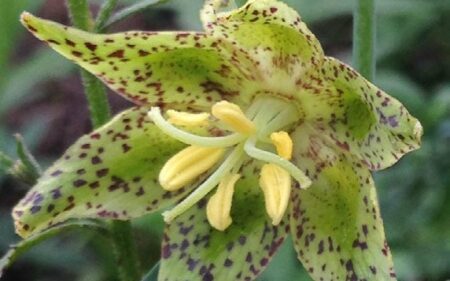Your Garden This Spring
Finally! A season of adequate rain! When did we think we would be able to say that again? Despite the long-term deficit in our reservoirs and in the deeper layers of our soils, our winter rains have finally given us the deep green, velvety coat so long expected and desired. Native plants are adept at quickly utilizing moisture in the top few inches of soil and the explosion of growth we are seeing around us both in our gardens and in the recent burn areas is the end result of that quick uptake.
While in other areas of the country the spring season signals the beginning of planting, in California, planting should be winding down. Though temperatures are inching upward and it is more comfortable to be out working in the garden, traditionally April is the month to finish your planting for the season. May brings only warmer temperatures (in a usual year) and no additional water. So for those still planning, know
that you will have to provide all the water those plants might need through our next hot summer. Don’t expect the small root ball you put in the ground in April to grow much more during the summer. Your role is to keep those plants alive through the heat until they can enjoy moist soils again later in the fall and can grant you the vigorous growth we’re used to in February and March.
California’s spring and early summer temperatures are mild enough that planting is still possible as long as the gardener remains observant and responsive through the next six to eight months. It has long been common wisdom to advise people to focus on more herbaceous material when planting late rather than the larger, woodier shrubs. Less woody plants, such as coral bells (Heuchera), California fuchsia (Epilobium), seaside daisy (Erigeron), and beach strawberry (Fragaria chiloensis) will be quick to establish new









roots as long as irrigation water is available. Woodier shrubs, like manzanita (Arctostaphylos) and California lilac (Ceanothus) are less enthusiastic about putting on new root growth as daily temperatures climb. Other woody plants that are actively growing in spring and summer, including buckwheats (Eriogonum), snowberry (Symphoricarpos), milkweed (Asclepias), or canyon sunflower (Venegasia) are also easier to succeed with when planted late. Mulch, as a way of conserving what water you do give your plants, is a must for late-season planting.

Pruning is another task easily accomplished in these warming months. Pruning in the late summer or early fall is often most effective since smaller (or fewer) leaves at that time of the year makes the overall shape of the plants more apparent and pruning choices easier. But pruning can be accomplished at any time of the year for most California natives. Pruning after the first flush of new growth can be helpful for many plants, including California lilac or buckwheats. If the limb is still bare at this point in the year, it’s time to let it go. Spring pruning is especially called for when you are trying to tame the growth of a large plant in a smaller space, training a plant to a specific shape, or training into a specific space, such as espaliers or constraining a vine along a fence. An axiom for all pruning at any time of the year is to avoid it when rain or irrigation water might fall on fresh cuts. Allow your cuts to air dry and do not be tempted to paint large cuts with sealants which tend to be the cause of problems, like fungal infections, that they claim to prevent.
Fertilizing is a much talked about early spring activity throughout the rest of the country and much less vital for California gardeners. Whereas much of the rest of the country has a quick carbon cycle, with fast decomposition of leaf litter, a windfall of available nutrients and consistent rains to sluice them away again, California has a much slower cycle as a result of our sparse and inconsistent rains. Our plants have adapted to a much more modest nutrient supply and are able to perform well in spite of it. Plants in the ground don’t need additional fertilizer beyond healthy and biologically active soils. However, all California natives will respond to fertilizers and the Garden has more regularly begun to use a little at planting time to increase performance. Mature plants should not need more than one application a year, if that. Late winter or early spring, during active growth, is the best time for this. Plants in containers need more help and fertilizing twice per year (spring and summer), or more often at half strength, is often necessary.
Now that the truly pleasant weather has arrived, it’s time to finish the last of our planned tasks and then enjoy the beauty that nature has wrought on the green-gilded wood around us.
 Donate
Donate




